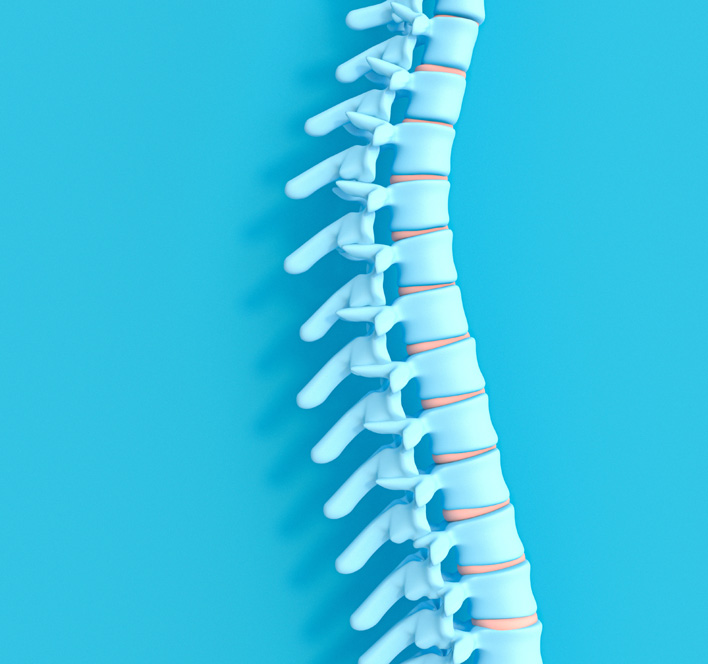Spinal stenosis is a common condition that can lead to significant discomfort and reduced mobility. It occurs when the spaces within the spine narrow, putting pressure on the nerves that travel through the spine. This condition can develop due to aging, arthritis, or other degenerative changes. Those affected by spinal stenosis often experience pain, numbness, and muscle weakness, particularly in the lower back and legs. Understanding the causes, symptoms, and treatment options is crucial for those suffering from this condition.
At NJ Spine & Orthopedic, we understand how spinal stenosis can impact your daily life. Our team is dedicated to providing effective, minimally invasive solutions to help alleviate your pain and improve your quality of life. With patients coming from all over the nation, our Concierge Team is here to make your travel and treatment process as seamless as possible, ensuring you receive the care you need.
What is Spinal Stenosis?
Spinal stenosis primarily affects older adults due to the natural degeneration of the spine with age. The condition involves the narrowing of the spinal canal, which can compress the spinal cord and nerves. This narrowing can be caused by several factors, including the overgrowth of bone, herniated discs, thickened ligaments, and tumors.
The symptoms of spinal stenosis vary depending on the location and severity of the narrowing. Common symptoms include back pain, numbness or tingling in the arms or legs, muscle weakness, and difficulty walking or standing for long periods. In severe cases, it can even lead to bladder or bowel dysfunction. Early diagnosis and treatment are essential to manage the symptoms effectively and prevent further complications.
Diagnosis of spinal stenosis typically involves a combination of medical history, physical examination, and imaging tests such as X-rays, MRI, or CT scans. These tests help to confirm the diagnosis and determine the extent of the narrowing in the spinal canal. Once diagnosed, there are several treatment options available, ranging from conservative methods to surgical interventions, depending on the severity of the condition.
Treatment Options for Spinal Stenosis
For mild to moderate cases of spinal stenosis, conservative treatments are often the first line of defense. These may include physical therapy to strengthen the muscles around the spine, medications to manage pain and inflammation, and lifestyle changes to reduce stress on the spine. In addition, epidural steroid injections can help reduce inflammation and provide temporary relief from symptoms.
When conservative treatments are not effective, surgical options may be considered. One of the advanced surgical treatments for spinal stenosis is the use of an interlaminar spacer. This minimally invasive procedure involves placing a small device between the vertebrae to help keep the space open and relieve pressure on the spinal cord and nerves.
The interlaminar spacer is designed to provide immediate relief by stabilizing the affected area of the spine and preventing further narrowing. This procedure is typically performed on an outpatient basis, allowing patients to return home the same day. The recovery time is generally shorter compared to traditional open surgeries, and patients often experience significant improvement in their symptoms shortly after the procedure.
Benefits of Interlaminar Spacer
The interlaminar spacer offers several benefits over traditional spinal surgeries. Firstly, it is a minimally invasive procedure, which means it requires smaller incisions and causes less damage to the surrounding tissues. This results in reduced postoperative pain, minimal scarring, and a faster recovery period. Patients can usually resume their normal activities within a few weeks, making it an attractive option for those with busy lifestyles.
Another advantage of the interlaminar spacer is its ability to preserve the natural movement of the spine. Unlike spinal fusion, which permanently joins two or more vertebrae together, the spacer allows for continued flexibility and motion in the spine. This helps to maintain the overall function and mobility of the spine, reducing the risk of adjacent segment degeneration, which can occur with spinal fusion.
The interlaminar spacer is also a versatile treatment option that can be used in conjunction with other therapies. For example, it can be combined with decompression surgery to remove any bone or tissue pressing on the nerves, providing a comprehensive solution for spinal stenosis. This combined approach can enhance the overall effectiveness of the treatment and improve patient outcomes.
Why Choose NJ Spine & Orthopedic?
At NJ Spine & Orthopedic, we are committed to providing top-quality care using the latest technology and minimally invasive techniques. Our experienced team is dedicated to helping you find relief from spinal stenosis and other spine-related conditions. We offer personalized treatment plans tailored to your specific needs, ensuring you receive the best possible care.
Choosing NJ Spine & Orthopedic means choosing a team dedicated to your well-being and committed to helping you regain your quality of life. We utilize state-of-the-art equipment and procedures to provide effective and minimally invasive treatments for spinal stenosis. Trust us to be your partner in health and recovery. Reach out to us today at (866) 553-0612 or visit our contact form.

